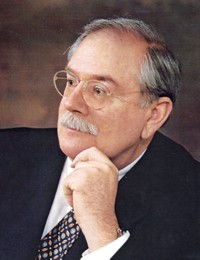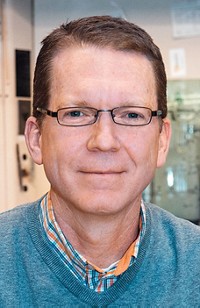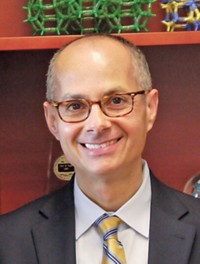Advertisement
Grab your lab coat. Let's get started
Welcome!
Welcome!
Create an account below to get 6 C&EN articles per month, receive newsletters and more - all free.
It seems this is your first time logging in online. Please enter the following information to continue.
As an ACS member you automatically get access to this site. All we need is few more details to create your reading experience.
Not you? Sign in with a different account.
Not you? Sign in with a different account.
ERROR 1
ERROR 1
ERROR 2
ERROR 2
ERROR 2
ERROR 2
ERROR 2
Password and Confirm password must match.
If you have an ACS member number, please enter it here so we can link this account to your membership. (optional)
ERROR 2
ACS values your privacy. By submitting your information, you are gaining access to C&EN and subscribing to our weekly newsletter. We use the information you provide to make your reading experience better, and we will never sell your data to third party members.
Materials
George A. Olah Award In Hydrocarbon Or Petroleum Chemistry
Sponsored by the George A. Olah Award Endowment
by Jeff Johnson
January 24, 2011
| A version of this story appeared in
Volume 89, Issue 4
Lawrence T. Scott’s fascination with organic chemistry—along with more than 30 years of research on polycyclic aromatic hydrocarbons—resulted in the first direct synthesis of buckminsterfullerene (C60) and a new world for organic chemists.
In the 1990s, Scott developed a novel groundbreaking approach that cut from 17 to three the steps to synthesize corannulene (C20H10), a bowl-shaped hydrocarbon and a potential buckminsterfullerene building block. Today, colleagues say, Scott’s research is paving the way toward using larger buckybowls as “seeds” from which to grow long, uniform, carbon-based nanotubes.
“Our team’s chemical synthesis of C60 is just the first step in a long journey that will involve many chemists in the years ahead,” explains Scott, the Louise & Jim Vanderslice & Family Chair in Chemistry at Boston College. “It will take us to the day when isomerically pure fullerenes can be made to order by chemical methods.”
Corannulene was first synthesized in 1967, but the 17-step classical synthesis was so forbidding that it was not repeated and the chemistry was not explored. In 1991, Scott’s lab work led to a rebirth of corannulene chemistry through the use of the extreme heat of flash vacuum pyrolysis to bend a planar isomer of corannulene into a geometry that could cyclize and make the bowl-shaped polyarene. The strategy was quickly adapted to syntheses of other larger fullerene fragments.
The synthesis showed that flash vacuum pyrolysis, a technique used historically to break down organic compounds, could also be a powerful tool for synthesizing more complex molecules. It was only a matter of time before Scott was able to build a planar 60-carbon molecule that could be stitched up to yield C60 in isolable quantities, uncontaminated by any other fullerenes.
“The family of higher fullerenes is infinite,” Scott notes. “There are 450 isomers of C100 that should be stable, for example, and we will never be able to study or use any of these marvelous materials if we cannot synthesize them.”
Scott, 66, first became interested in chemistry as a child, he explains, and that interest took off in high school because of an inspiring chemistry teacher. He focused on organic chemistry at Princeton University, where he earned an A.B. degree, and from there went to Harvard University, earning a doctorate in organic chemistry.
This award is long overdue, says Michael M. Haley, head of the chemistry department at the University of Oregon. He calls Scott a “tireless champion” for hydrocarbon chemistry, noting that Scott has trained nearly 60 doctorate and masters students and 36 postdoctoral research fellows, has delivered plenary lectures at more than 50 national and international scientific meetings, and has presented his research at another 250 universities and chemical companies in 21 countries.
The lectures provide travel opportunities, Scott notes, which satisfy one of his passions.
“I am happy to be working in a profession that not only allows—but encourages and even rewards—international travel and a chance to participate in conferences and visit colleagues at their universities,” he says. Other interests closer to home include grabbing time to attend at least one Jimmy Buffett concert and one bluegrass music festival each year.
Scott will present the award address before the ACS Division of Organic Chemistry.






Join the conversation
Contact the reporter
Submit a Letter to the Editor for publication
Engage with us on Twitter